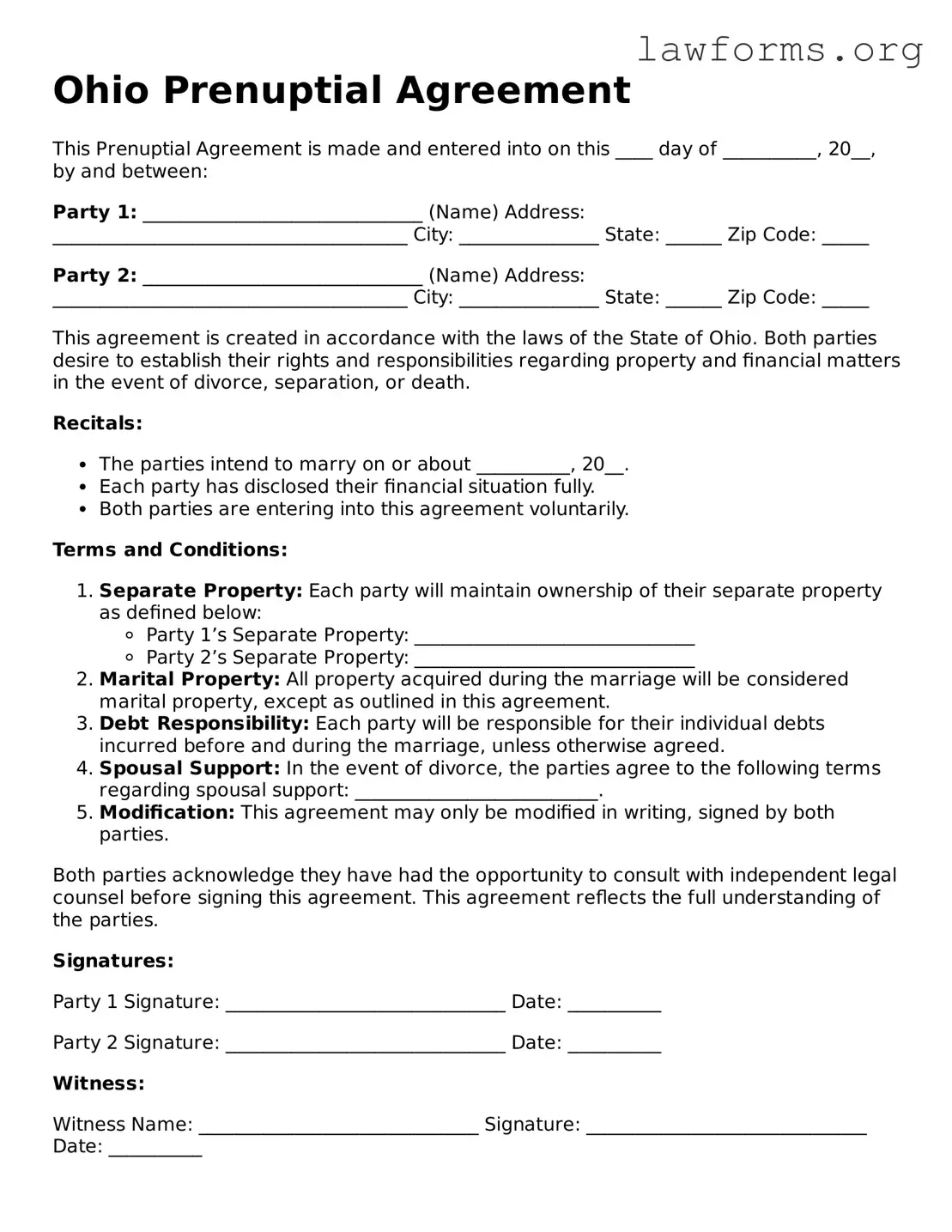Ohio Prenuptial Agreement
This Prenuptial Agreement is made and entered into on this ____ day of __________, 20__, by and between:
Party 1: ______________________________ (Name)
Address: ______________________________________
City: _______________ State: ______ Zip Code: _____
Party 2: ______________________________ (Name)
Address: ______________________________________
City: _______________ State: ______ Zip Code: _____
This agreement is created in accordance with the laws of the State of Ohio. Both parties desire to establish their rights and responsibilities regarding property and financial matters in the event of divorce, separation, or death.
Recitals:
- The parties intend to marry on or about __________, 20__.
- Each party has disclosed their financial situation fully.
- Both parties are entering into this agreement voluntarily.
Terms and Conditions:
- Separate Property: Each party will maintain ownership of their separate property as defined below:
- Party 1’s Separate Property: ______________________________
- Party 2’s Separate Property: ______________________________
- Marital Property: All property acquired during the marriage will be considered marital property, except as outlined in this agreement.
- Debt Responsibility: Each party will be responsible for their individual debts incurred before and during the marriage, unless otherwise agreed.
- Spousal Support: In the event of divorce, the parties agree to the following terms regarding spousal support: __________________________.
- Modification: This agreement may only be modified in writing, signed by both parties.
Both parties acknowledge they have had the opportunity to consult with independent legal counsel before signing this agreement. This agreement reflects the full understanding of the parties.
Signatures:
Party 1 Signature: ______________________________ Date: __________
Party 2 Signature: ______________________________ Date: __________
Witness:
Witness Name: ______________________________
Signature: ______________________________ Date: __________
